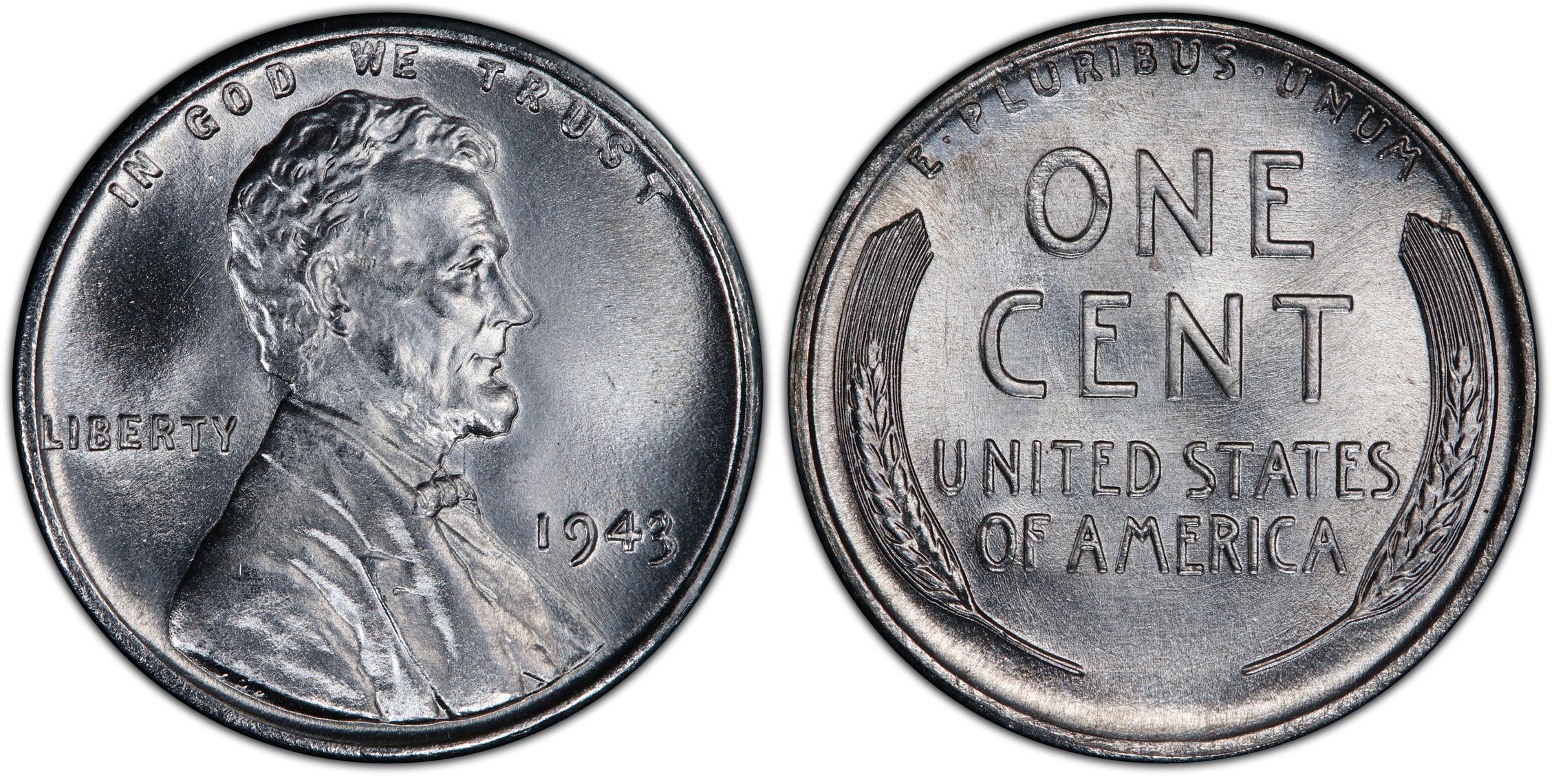- PCGS #:
- 2711
- Designer:
- Victor David Brenner
- Edge:
- Plain
- Diameter:
- 19.00 millimeters
- Weight:
- 2.70 grams
- Mintage:
- 684,628,670
- Mint:
- Philadelphia
- Metal:
- Zinc-coated Steel
- Auction Record:
- $218,500 • AU58 • 01-06-2010 • Heritage Auctions
Rarity and Survival Estimates Learn More
| Survival Estimate | |
|---|---|
| All Grades | 68,000,000 |
| 60 or Better | 40,000 |
| 65 or Better | 22,000 |
| Numismatic Rarity | |
|---|---|
| All Grades | R-1.0 |
| 60 or Better | R-2.6 |
| 65 or Better | R-2.7 |
| Relative Rarity By Type All Specs in this Type | |
|---|---|
| All Grades | 2 / 4 TIE |
| 60 or Better | 2 / 4 TIE |
| 65 or Better | 3 / 4 TIE |
| Relative Rarity By Series All Specs in this Series | |
|---|---|
| All Grades | 2 / 4 TIE |
| 60 or Better | 2 / 4 TIE |
| 65 or Better | 3 / 4 TIE |
Condition Census What Is This?
 #1 MS68 PCGS grade
#1 MS68 PCGS grade
|
| #1 MS68 PCGS grade |
| #1 MS68 PCGS grade |
| #1 MS68 PCGS grade |
| #1 MS68 PCGS grade |
| #1 MS68 PCGS grade |
| #1 MS68 PCGS grade |
| #1 MS68 PCGS grade |
| #1 MS68 PCGS grade |
| #1 MS68 PCGS grade |
1943 was a very critical year for the U.S. and the U.S. Mint. America was in the midst of World War II, and there were alarming concerns because of copper shortages needed for artillery used to fight the war. As a result, it affected the U.S. Mint and hundreds of millions of 1943 Lincoln cents.
History
The U.S. Government’s response was to cease the production of all Lincoln cent coins, primarily because they were made out of copper. The U.S. Mint was left with the task of transforming the Lincoln cent coins metal composition. The end result would be that all 1943 cents were now composed of mostly steel content with a 5% mixture of zinc.
The 1943 steels cents are easily distinguishable because of their gray surfaces, which gives them a silver like appearance. The 1943 Lincoln cents are the first steel cents produced for circulation by the U.S. Mint. It struck steel cents at Philadelphia, Denver and San Francisco. There were no proof coins struck for this year. 1943 also remains as the only year in which the Mint struck steel coins. (This does not include a few transitional steel error coins which were unintentionally struck by the U.S. Mint.)
1943 Philadelphia, Denver and San Francisco Cent Comparisons
Philadelphia 1943 Cents have the highest mintage from all three steel cents this year. It has about three times a higher mintage than each of the Denver and San Francisco 1943 steel cents.
1943 Cent Striking Characteristics
All 1943 dated cents were struck with fairly new dies. 1943 dies were replaced much quicker than prior dated Lincoln cent dies, primarily, because of the hardness of the steel cent planchets. The striking point between both the obverse and the reverse dies was also minimized, in order to obtain a better strike and sharper surfaces. The striking pressure was also increased to create optimum coin design features. This is the reason why there are more 1943 wheat cents in high grades of MS68 or in higher condition than any other wheat cent from 1909–1959 and including all memorial cents struck from 1959 to 1983. Most all 1943 steel cents in MS65 condition or higher, display great eye appeal and vibrant and original luster. From all three different mint mark steel cents struck in1943, the Philadelphia 1943 cents are the scarcest in MS68 grades or higher. About 75 total examples survive in MS68 grades. As of 2010, PCGS has not graded one example in MS69 grade or higher.
Varieties
There are several different varieties and errors for this date and mint mark. The most famous of all are the 1943 error coins which were accidentally struck on copper planchets. There is also a significant doubled die for this date and mint mark. In 2019, an example was also discovered as being struck in mostly tin. The XLF analysis measured 86.4% tin, 8.4% antimony, 1.% copper and 1% vanadium. Some numismatic experts believe the tin example is an experimental piece


